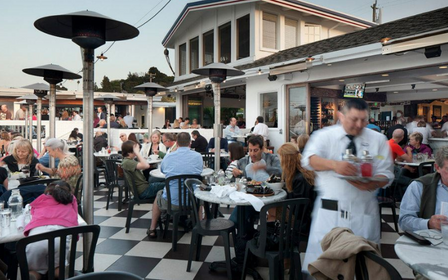Patio Heater Safety Tips
Posted by Alfresco Heating on Jun 14th 2022
Many friends and families may be warming up to the idea of increasing outdoor gatherings this spring. But it’s important to understand the dangers of fire and “the silent killer” known as carbon monoxide (CO) poisoning, know how to properly use patio heaters, and stay safe around open-flame units.
CO is produced by all devices that burn fuel, including patio heaters and fire pits, and this colorless, odorless, and tasteless gas can accumulate in any environment with limited air movement.
Ensure your space that is equipped with patio heaters is well ventilated and make sure smoke and CO alarms are working properly, even if they’re located inside buildings and structures nearby.
Both portable and fixed upright patio heaters are designed exclusively for outdoor use only, and should be located in open areas away from combustible materials. Gas and propane patio heaters should never be installed in enclosed areas. These outdoor heating devices can run short of oxygen if used inside tents or enclosed areas. If that happens then the heaters will produce carbon monoxide. In an enclosed space that can be deadly. Ample ventilation both below and higher than the tops of the patio heaters is essential for safe operation.
Many portable patio heaters can be turned down to low, but may not burn as cleanly when they are on the low setting. If the flames turn yellow then try turning the heaters up a little bit. A yellow flame is a dirty flame - take note of this fire pit owners - and a blue flame is a clean flame, and produces very little in the way of harmful emissions. A little bit of yellow at the flame tips is normal, particularly when the fuel is propane, or LP gas. The metal heat emitter screen of an upright (mushroom) patio heater will glow orange, which is good. The blue or yellow flame that’s being referred to is behind the emitter.
Portable outdoor heaters should be positioned on level, stable surfaces so they won’t get easily knocked over. Good portable patio heaters will come with base weights that prevent them from easily tipping over.
Don’t leave operating patio heaters unattended and pay close attention when children, pets, or intoxicated individuals are near them. It’s a good idea to have a working fire extinguisher located close by.
You should leave clearance around the patio heater according to the manufacturer’s instructions. It will differ for each unit. Get advice from Alfresco Heating’s outdoor heating experts to find the appropriate patio heater(s) for your outdoor space.
Use caution before relocating a portable patio heater. Make sure the fuel supply is properly shut off and the unit is cool. It should never be moved while the flame is lit. If it’s an electric portable patio heater, make sure to unplug it.
Equipment should be properly stored and maintained per the manufacturer’s instructions and inspected before firing up for the season. Read the manufacturer's instructions, as there may be information about the best way to self-maintain the specific brand and model. Installing head covers on upright patio heaters can discourage insects from moving in. For propane pation heaters, leave a propane tank connected all through the off season to prevent insects from bugging up the propane regulator.
To test your patio heaters, simply fire them up. It’s OK if they pop and sizzle a little as they burn off the accumulated dust from the period of non use. Once that stops, the emitter grid (which is metal on portable gas patio heaters, and is often ceramic on permanent overhead gas patio heaters) should glow orange and you should feel substantial heat. If you can’t get the outside heaters to light, stay lit, the flames are yellow, or the heat is weak, contact Alfresco Heating and we will be happy to assist you.
The experts at Alfresco Heating can answer your questions about which heaters are best for your space along with the best placement, with consideration to safety, effectiveness, and aesthetics. Call 888-Warm-Glo (888-927-6456) or email glow@alfresco-heating.com.
© 2020 Alfresco Heating. All rights reserved. May not be copied or used without express permission

